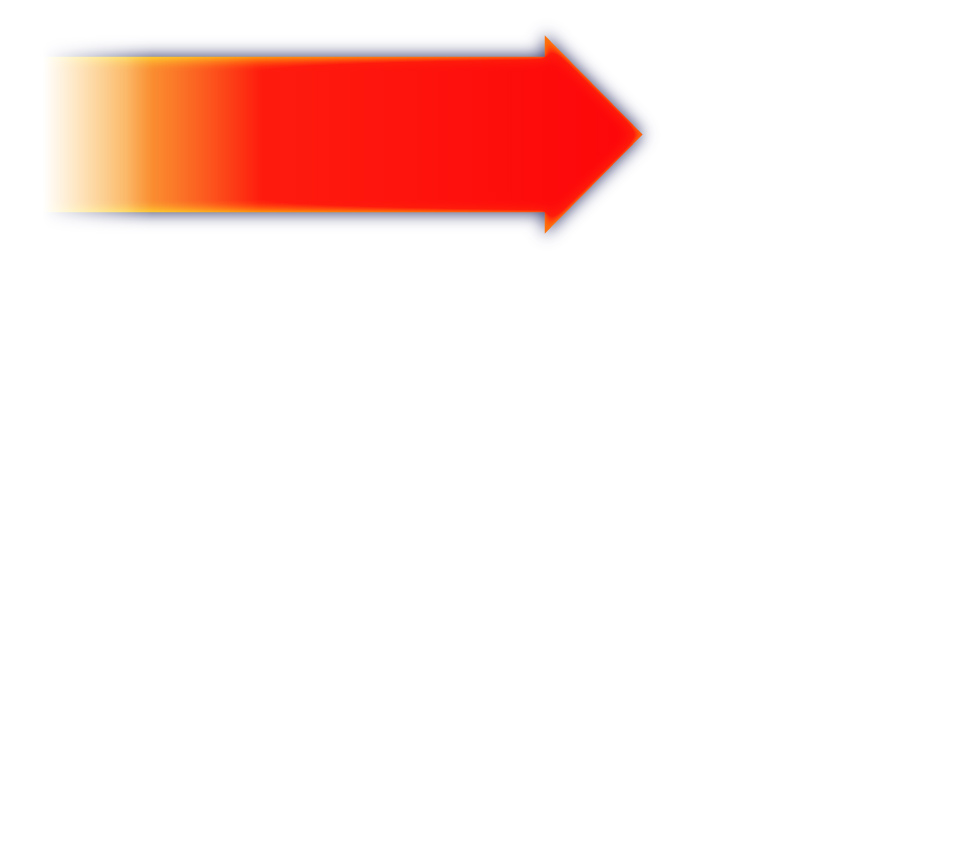
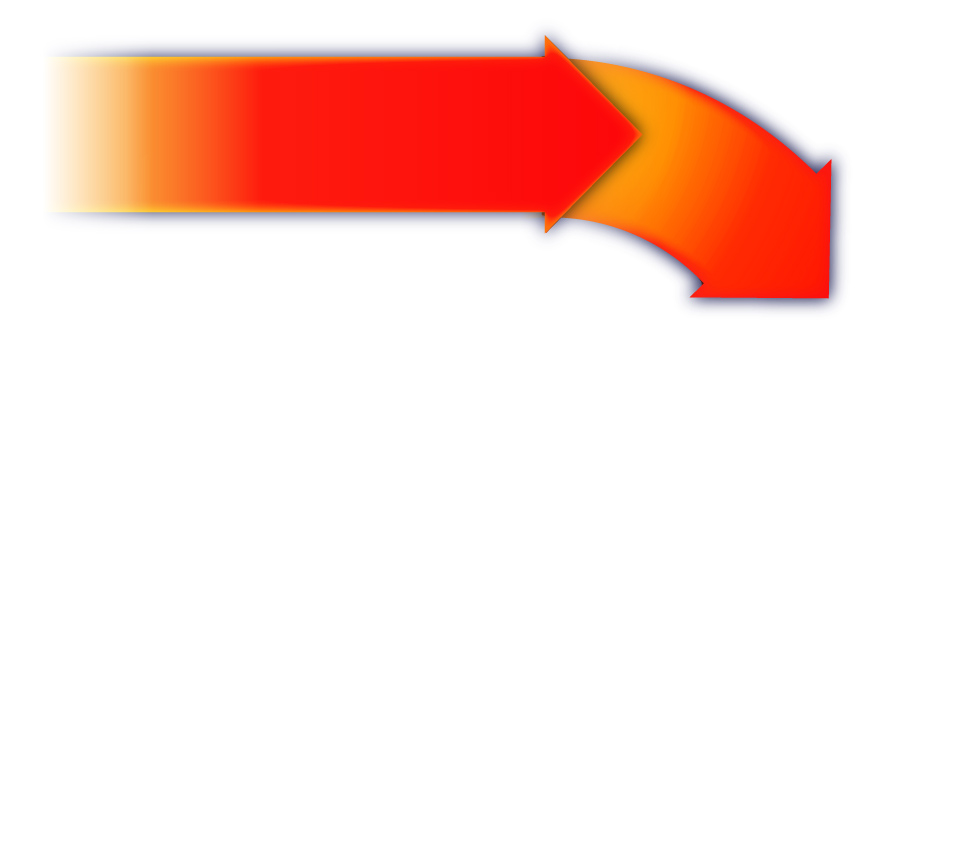
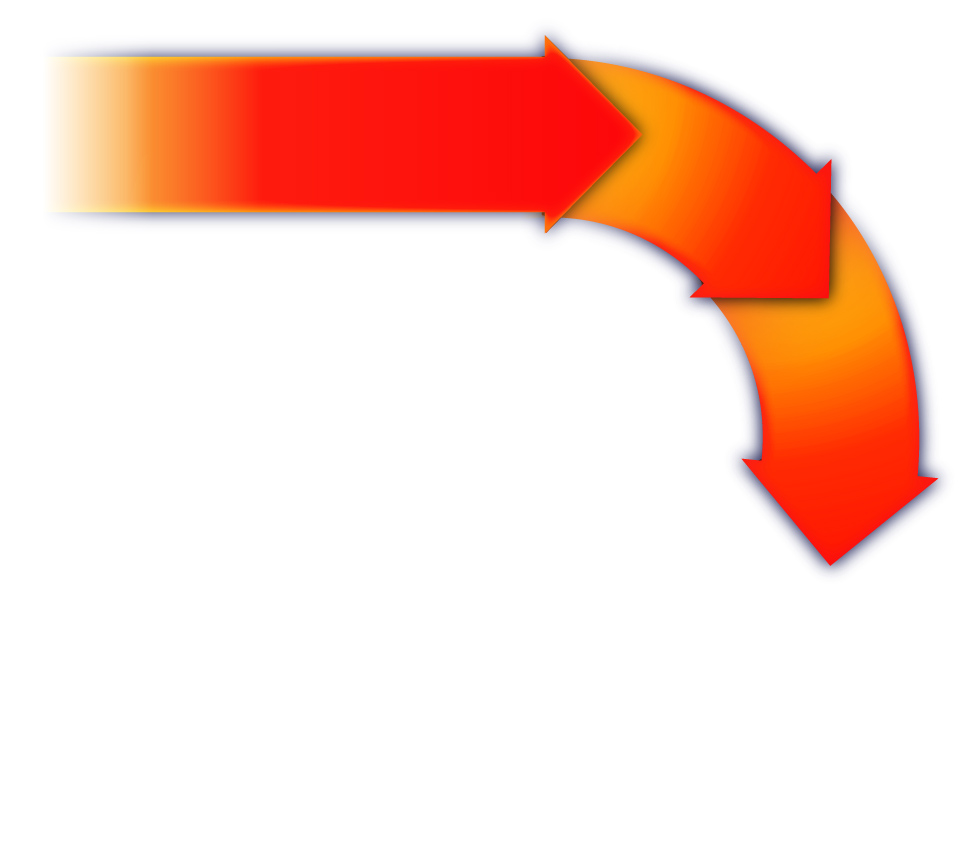
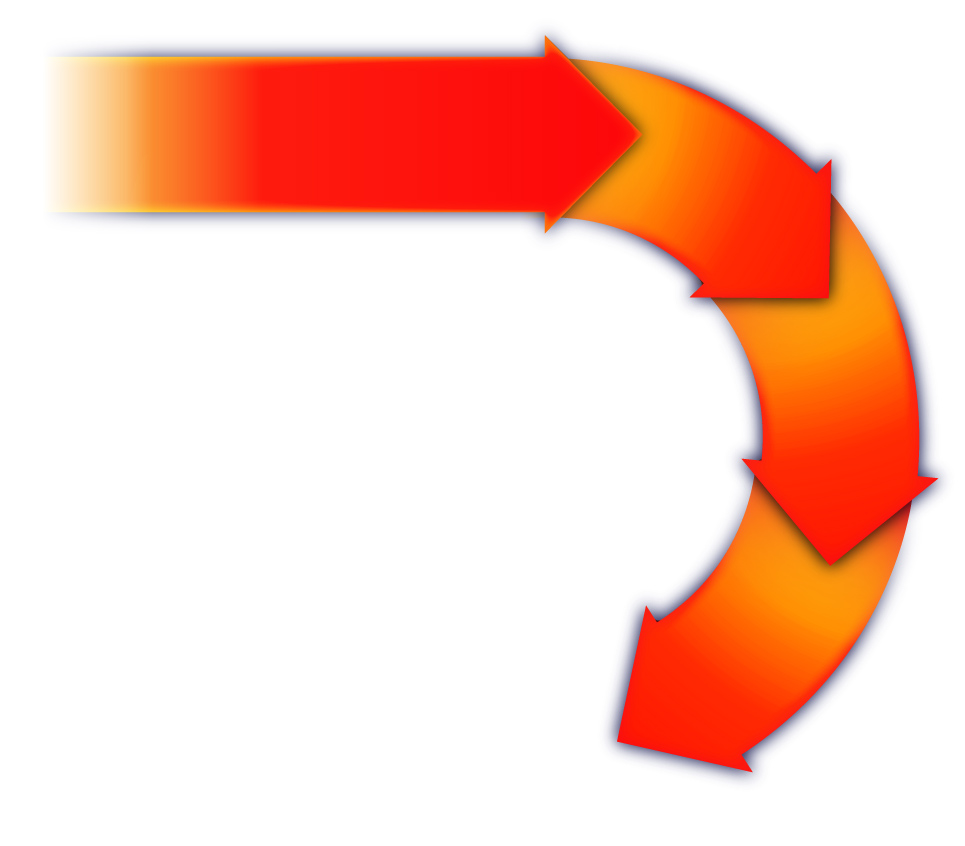
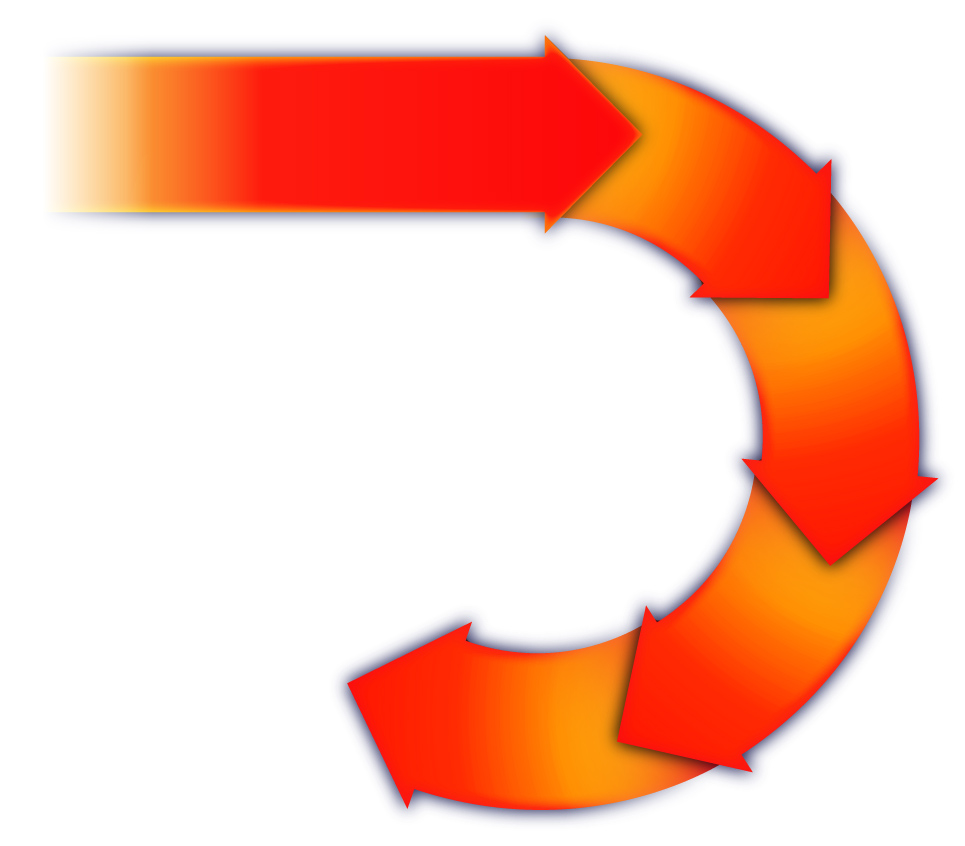
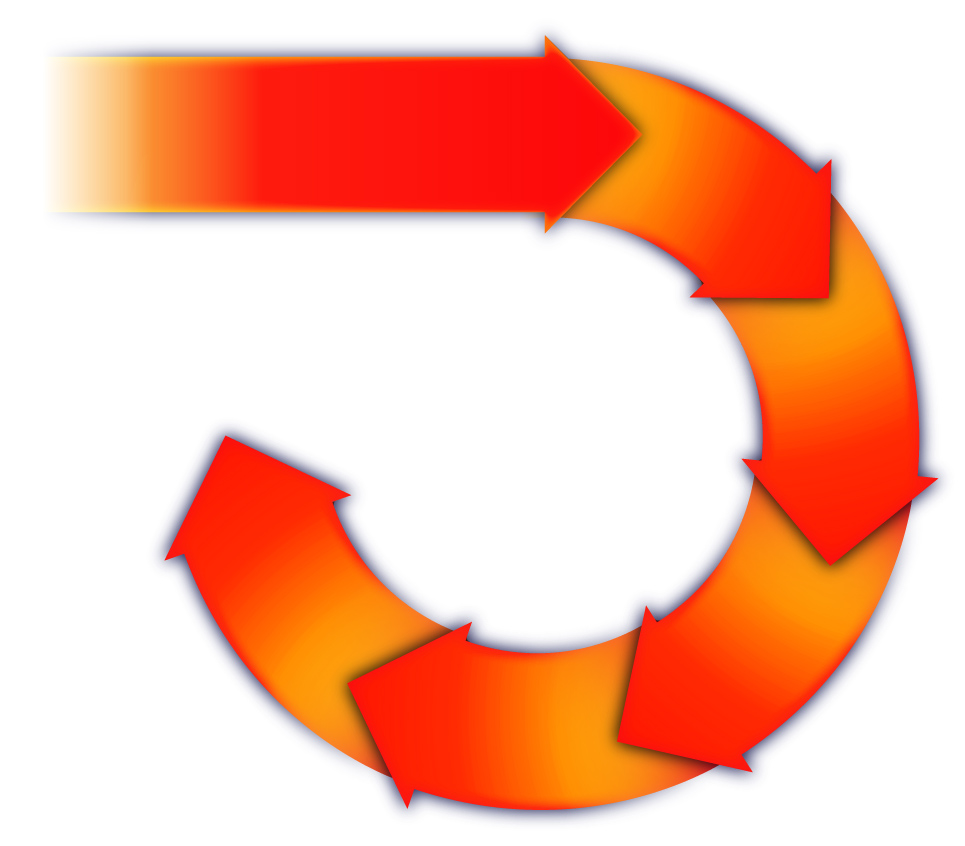
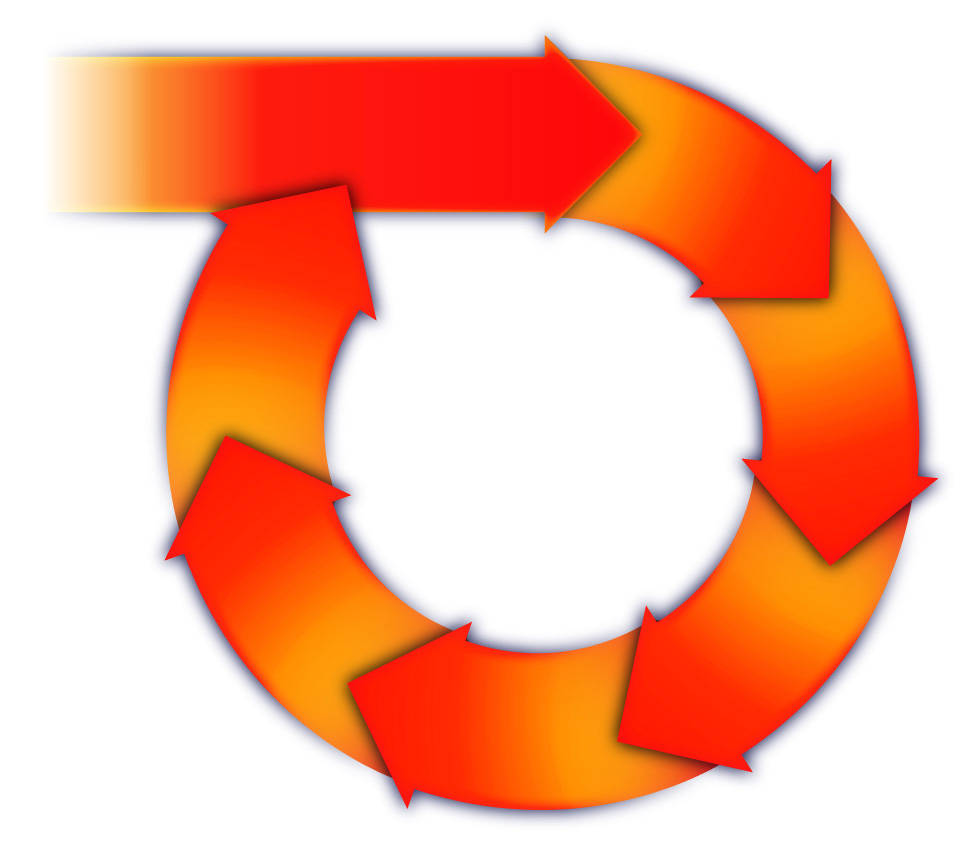
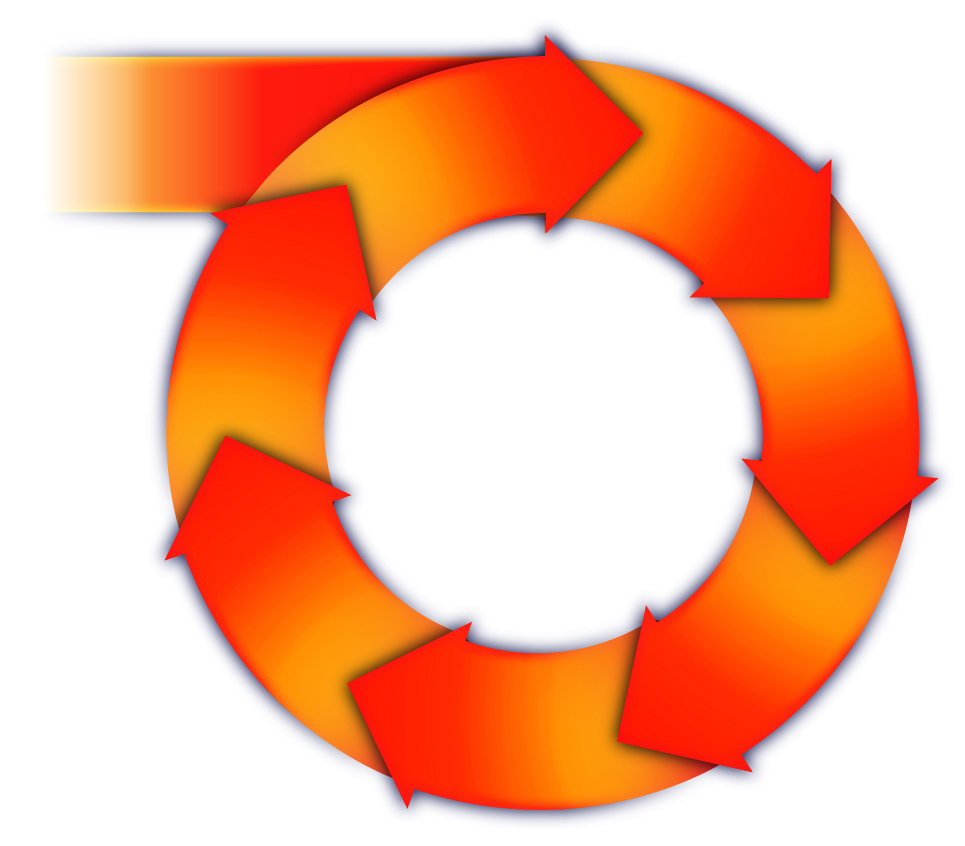
The Research Process
Anything you write involves organization and a logical flow of ideas, so understanding the logic of the research process before beginning to write is essential. Simply put, you need to put your writing in the larger context—see the forest before you even attempt to see the trees.
In this brief introductory module, we’ll review the major steps in the research process, conceptualized here as a series of steps within a circle, with each step dependent on the previous one. The circle best depicts the recursive nature of the process; that is, once the process has been completed, the researcher may begin again by refining or expanding on the initial approach, or even pioneering a completely new approach to solving the problem.
Identify a Research Problem
You identify a research problem by first selecting a general topic that’s interesting to you and to the interests and specialties of your research advisor. Once identified, you’ll need to narrow it. For example, if teenage pregnancy is your general topic area, your specific topic could be a comparison of how teenage pregnancy affects young fathers and mothers differently.
Review the Literature
Find out what’s being asked or what’s already been done in the area by doing some exploratory reading. Discuss the topic with your advisor to gain additional insights, explore novel approaches, and begin to develop your research question, purpose statement, and hypothesis(es), if applicable.
Determine Research Question
A good research question is a question worth asking; one that poses a problem worth solving. A good question should:
- Be clear. It must be understandable to you and to others.
- Be researchable. It should be capable of developing into a manageable research design, so data may be collected in relation to it. Extremely abstract terms are unlikely to be suitable.
- Connect with established theory and research. There should be a literature on which you can draw to illuminate how your research question(s) should be approached.
- Be neither too broad nor too narrow. See Appendix A for a brief explanation of the narrowing process and how your research question, purpose statement, and hypothesis(es) are interconnected.
Appendix A
Research Questions, Purpose Statement, Hypothesis(es)
Develop Research Methods
Once you’ve finalized your research question, purpose statement, and hypothesis(es), you’ll need to write your research proposal—a detailed management plan for your research project. The proposal is as essential to successful research as an architect’s plans are to the construction of a building.
See Appendix B to view the basic components of a research proposal.
Appendix B
Components of a Research Proposal
Collect & Analyze Data
In Practical Research–Planning and Design (2005, 8th Edition), Leedy and Ormrod provide excellent advice for what the researcher does at this stage in the research process. The researcher now
- collects data that potentially relate to the problem,
- arranges the data into a logical organizational structure,
- analyzes and interprets the data to determine their meaning,
- determines if the data resolve the research problem or not, and
- determines if the data support the hypothesis or not.
Document the Work
Because research reports differ by discipline, the most effective way for you to understand formatting and citations is to examine reports from others in your department or field. The library’s electronic databases provide a wealth of examples illustrating how others in your field document their research.
Communicate Your Research
Talk with your advisor about potential local, regional, or national venues to present your findings. And don’t sell yourself short: Consider publishing your research in related books or journals.
Refine/Expand, Pioneer
Earlier, we emphasized the fact that the research process, rather than being linear, is recursive—the reason we conceptualized the process as a series of steps within a circle. At this stage, you may need to revisit your research problem in the context of your findings. You might also investigate the implications of your work and identify new problems or refine your previous approach.
Refine/Expand, Pioneer
The process then begins anew . . . and you’ll once again move through the series of steps in the circle.